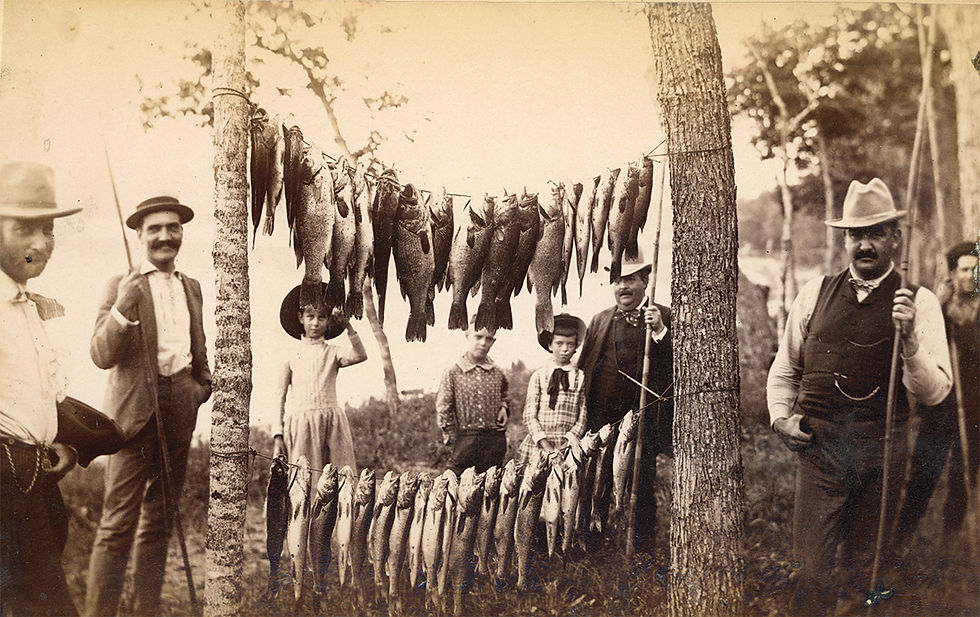A shining light on a fading profession
- Sr Perspective

- Aug 29, 2013
- 2 min read
“I always get a kick out of it when people write their checks out to ‘Dave’s B.S.,’” laughs longtime Morris barber Dave Evenson. Now, the term “barber” should not be confused with hair stylist or cosmetologist. Dave does not set or color hair or give perms. But in spite of competition from several hair salons (and, recently, another barber) he has built a loyal and steady clientele due – no doubt – to his wry, and often bawdy, sense of humor and his ability to spin long yarns about days past. The social aspect of catching up with the old timers plays as much a part of his business as his skills with a scissors.
When he opened way back in 1970, there were a full five barbers operating in Morris. Dave recollects a time of 11 in Morris, plus two more in neighboring Hancock and one in neighboring Chokio. According to Ronald S. Barlow, in his book The Vanishing American Barber Shop, the varied services offered by American barber shops accounts for their early proliferation.
There was a time when the saddle-weary stranger could ride into any town, dirty, smelly, sunburned, bewhiskered and hungry, with less than a dollar in his pocket and be welcomed to the sign of the bloodstained pole. Within an hour’s time he would be bathed, shorn, shaved, perfumed and manicured, have his boots shined, his mustache curled and his pants pressed. Some barber shops even offered customers a mug of beer and a free cigar!
The golden age of the tonsorial art – the technical term for barbering – has been long fading (“We deserve federal assistance,” chuckles Dave, “we are an endangered species.”) One factor has been the steady limitations placed on what barbers can and cannot do. Before the AIDS epidemic, barbers regularly shaved stubbly faces using hot water, a wet towel, whisked soap from a ceramic shaving mug, and a very sharp straight-edged razor. Before the advent of the safety razor, going to the barber was the only way to get a shave (except, of course, for those few brave souls who took this potential instrument of death onto their own faces). Competition from hair salons also cut into business. In the early 1980s, the profession took quite a blow when a court decision allowed beauticians to cut men’s hair – a service formally limited to barbers.
A traditional indication of a barber is a window bijouterie; a display of trinkets in a barber shop, such as a bust of a woman with beautifully coiffed hair, a ceramic bear holding a card advertising products like “James Atkinson’s Bear Grease,” canes combs, beard styling combs, mustache waxes, creams, fanciful blue tonics and perhaps shampoos.
Dave’s Barber Shop’s “bijouterie” consists of Swedish and Norwegian “Bowling Balls” (two and three-holed painted bricks), golf balls in egg cartons, golf clubs, and Norwegian joke books. Where advertisements of the latest hairstyles might normally be hung, a poster of Moe, Larry and Curly, not exactly paragons of tonsorial taste, greet the customer.
Immediately after graduating from the Brooks School of Barbering in Saint Paul in 1969 (it had a 10-month-long waiting list then; now the school is closed due to lack of business), Dave practiced barbering in the Twin Cities’ western suburbs of Golden Valley, Brooklyn Center and St. Louis Park. Before barbering, he dabbled in hauling livestock and constructing guard rails. His tonsorial initiation came at 16 when his brother bought a pair of clippers. “He woke me up at six in the morning and said ‘Give me a hair cut.’ I’m glad he wasn’t too finicky.” From that point on he found himself flooded with requests and gave unlicensed haircuts anywhere from grocery to hardware stores.
Barbering school taught him about bones, muscle groups, such as omibyoiseud and triangularus (“Big words for a Norwegian,” he jokes. “You’ve got to be a doctor to get your license.”) and the inner workings of the nervous and digestive systems.
In spite of being from the small town of Sunburg (where “they still talk Norwegian in the cafe”), he has visited Alaska, northern Canada, Scandinavia, California, even Costa Rica, where one of his sons used to live. Even with all the challenges to the profession, Dave has no plans of retiring soon. And who better to keep the “B.S.” in barber shop?
Special thanks to The Vanishing American Barber by Ronald S. Barlow (available as reading material while waiting for a haircut), previous articles, “Barber Dave, The talk of the Town” by Aaron Gruber, appearing in The University Register (University of Minnesota, Morris), January 18, 1996, “Sunspot: Dave Evenson” by Marshall Hoffman, appearing in The Morris Sun Tribune, October 17, 2009, and, of course, Dave himself for two decades of haircuts and colorful quotes.




Comments